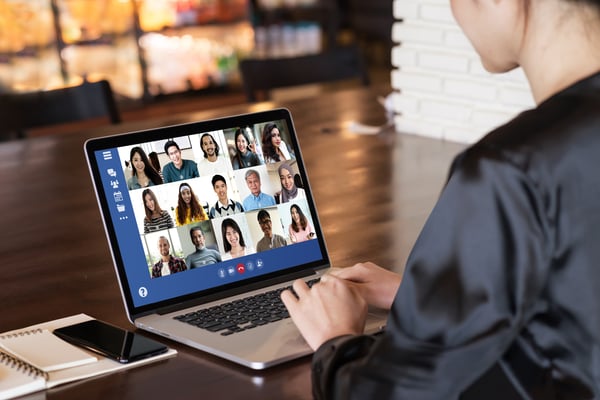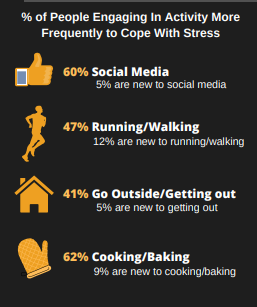Since early 2020, people across the US have endured rapid change in their daily lives due to the threat of COVID-19. The federal unemployment rate has risen rapidly, only to drop for the first time since mass shutdowns in May thanks to a 2.5 million jobs bump to the economy.
From Zoom calls to drive-through graduations, everyone has felt the impact of social distancing in their usual routine.

Dream Catcher Innovation Labs (DCIL), a North Carolina-based management consulting firm, set out to learn more about the effect social distancing has had on individual behaviors and emotions.
This report revealed some interesting insights for businesses trying to pivot and keep up with changes.
Of the surveyed participants, 74% indicated that their daily routine has been impacted by coronavirus, and more than 2x as many people were experiencing extreme stress as a result of current events.
How are we adapting to the new normal?
Due to the uncertainty of COVID-19, many respondents reported that they were changing their habits and engaging in new behaviors.
For example, the image below demonstrates popular activities among respondents.

Some apparent emerging behaviors adopted due to social distancing include engaging in virtual calls, meditating, journaling, and practicing yoga. A majority of survey participants indicated that they would continue these behaviors beyond social distancing.
What does this tell us about consumers?
The DCIL study shows that people are dealing with anxiety and stress in higher percentages than before social distancing took effect. However, in the midst of this anxiety, individuals are taking steps to cope with their stress and overcome negative emotions.
In short, people are seeking to improve themselves and take control of their environments.

Companies are in a position to address the effects of COVID-19 and offer solutions to fit new behaviors. Businesses must adapt to the consumer behavior to continue building relationships. DCIL argues that this is a unique moment to shift priorities and spark innovation.
How will your business pivot to accommodate your customer’s evolving attitudes and needs?


-AK-148968-preview.png?width=842&height=310&name=1.01-1x1px-Embertribe-(Client-Services)-AK-148968-preview.png)












.png?width=810&height=810&name=TJ%20Jones%20-%20%20CoFounder%20EmberTribe%20(1).png)


%20-%20500x500%20-%20SP%20-%2045.01.png)
%20-%20500x500%20-%20SP%20-%2049.01.png)
%20-%20500x500%20-%20SP%20-%2057.01.png)


.png)